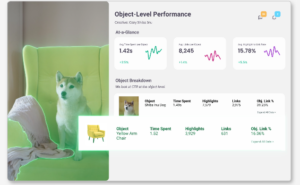Advertising spend for 2020 will shrink at a slower rate than previously predicted according to Zenith Media’s latest forecast, with a decline of 7.5% now expected, reaching $587bn overall.
The latest Zenith Advertising Expenditure forecast, which this year has been reviewing the impact of the Covid-19 impacted industry, is up on the July prediction of a 9.1% decline although a full recovery is not expected next year with only a 5.6% growth in spend estimated for 2021, reaching $620bn. 2022 spend is expected to grow by another 5.2% to $652bn, ahead of 2019 by $18bn.
The forecast echoed the estimate released recently by Warc which saw a recovery of only 59% next year in comparison to 2019. It too claimed that it would take until 2022 for spending levels to recover to pre-pandemic levels despite 2021 being set to host several delayed events, including the European Football Championships and the Tokyo Olympics, both of which traditionally deliver a surge in advertiser interest.
The impact of digital transformation
With the global shift to depend online for entertainment, communications and shopping, businesses have been forced to shift more focus to evolving the digital footprint, which has resulted in a global growth of digital adspend of 14% for this year, it is also forecast, making it over half of the total spend in advertising (52%) with ecommerce sales having grown while in-store has declined.
Search and social media spend have also boomed in tandem, growth that will continue moving forward with Zenith predicting digital advertising accounting for 58% of adspend globally by 2023.
New online marketing tactics for retailers
Retailer media turned to display and search to push their ecommerce offering while witnessing rapid growth in demand, promoting products at point of purchase as is common practice within physical stores using in-store display adverts. As a result, a growth in spend of $51bn was forecasted for 2020 on retailer media, up by 46% year-on-year.
“Retail platforms are powering their growth by putting pressure on brand margins. Their focus on bottom out price wars, and enhanced consumer experiences, benefit consumers while brands bear the cost,” explained Ali Nehme, Global Chief Commerce Officer, Publicis Groupe. “In this scenario, brands must flex their own power, by selecting retailer partners who offer demonstrable value through transparent data and measurement, as well as the ability to deliver the consumers who will drive much needed category growth.”
The connected TV boom
Another major winner of 2020’s problems was television with streaming on demand evolving and online video platforms experiencing record audience levels, exemplified by the launch of Disney+ which reached its five-year subscription target within nine-months. Meanwhile, Netflix and Amazon Prime saw increased subscription demand to access their video content.
During the first four months of this year, ad-funded video on demand services rose by 9% to reach 58.5m households. The expected continued growth in adoption of connected TV is likely to help grow online video spend by 8.4% between 2020 and 2023, it is forecast.
Christian Lee, global managing director at Zenith said that the potential mass reach across key markets mean that now was the moment for brands to invest in the connected TV space.
“Brands should use connected TV for both branding and performance, exploiting its high ad recall and full targeting and tracking capabilities to drive awareness and sales conversions at the same time,” advised Lee.
One region that is predicted to see a return to 2019 spend levels next year however is Asia Pacific as well as Central and Eastern Europe which were able to limit the economic damage due to early containment of the virus.
These forecasts were compiled ahead of the announcement that Covid-19 vaccines would be available first in the UK from this week although sustained recovery was assumed with their availability next year.









